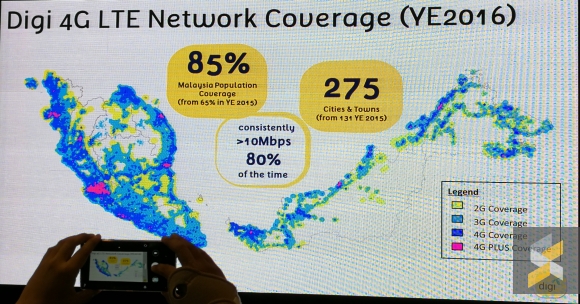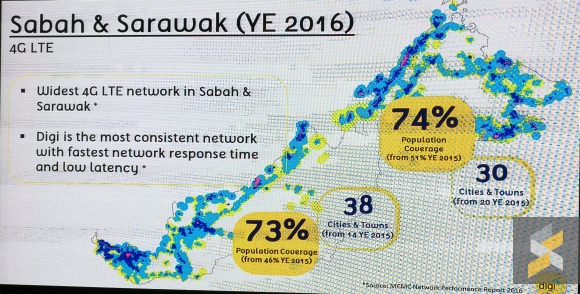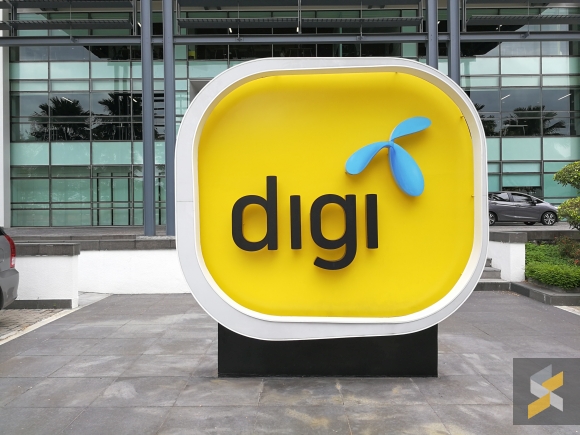Today, in Digi‘s network update briefing, the telco made a bold claim that they had the most advanced LTE-Advanced network in Malaysia. According to them, this is due to the fact that they have the widest LTE-A network coverage plus VoLTE capabilities with VoWiFi rolling out sometime soon.

It’s true that the telco has expanded their LTE coverage quite a bit over the past year, growing 25% from year-end in 2015 to year-end 2016. Now, they cover 85% of the Malaysian population with 275 cities and towns (up 144 from the previous year). However, Digi defines LTE connectivity as speeds of more than 10Mbps 80% of the time.

Besides that, the telco also has the largest 4G LTE network in Sabah and Sarawak, covering 73% of Sarawak’s population and 74% of Sabah’s, a growth of about 50% from the year before — which isn’t an insignificant number.

In central Peninsular Malaysia, Digi claims to have 97% of the population covered plus a 40% increase in LTE network growth since Dec 2017. They’re also claiming that they have the widest LTE-A concentration nationwide.
However, the telco also isn’t blind to its weaknesses and admits that when it comes to indoor performance, they’re still a little behind their competitors. That said, the telco’s got a plan to improve this and it hinges on their use of the 900MHz spectrum that they were newly awarded. This spectrum has much wider coverage and better wall penetration than the 1800MHz and 2600MHz spectrums that Digi currently have in operation right now.

The telco plans to activate the 900MHz spectrum nationwide sometime in July of this year so you can expect your indoor coverage and performance to be improved. Digi labeled this as a “game changer” and they’re definitely going to need it if they want to be competing on the same plane as Maxis and Celcom.
If the recent Network Performance Report 2016 by the Malaysian Communications and Multimedia Commission (MCMC) is anything to go by, Digi’s still got some work to put in to catch up to team green and team blue.
Although the yellow telco says that they “fared well” in the report, when we took a closer look, the telco’s still some ways behind the top dogs. In categories like average download speed and speed consistency over 650kbps, for example, Digi clocked in a score of just 16.55Mbps and 98.88% (percentage above 650kbps) respectively.
Comparatively, Maxis clocked in an average download speed of 22.89Mbps (with 99.76% over 650kbps) while Celcom posted 18.97Mbps (with 99.28% over 650kbps). They’re also down in the latency test, only managing to stay below or equivalent to 250 ms 88.18% of the time. Keep in mind that this test was conducted outdoors on street level, so indoor speeds may vary even further.
When it comes to the 4G LTE players, Digi’s only ahead of U Mobile in these three categories but then again, the yellow telco has said time and time again that they’re not “obsessed with speed”. Instead, they’re putting their efforts into improving network performance for a more consistent overall experience with very little lag or buffering.
Is this really the case? That’s something only Digi users can answer. If you have any thoughts, do let us know in the comments below.









